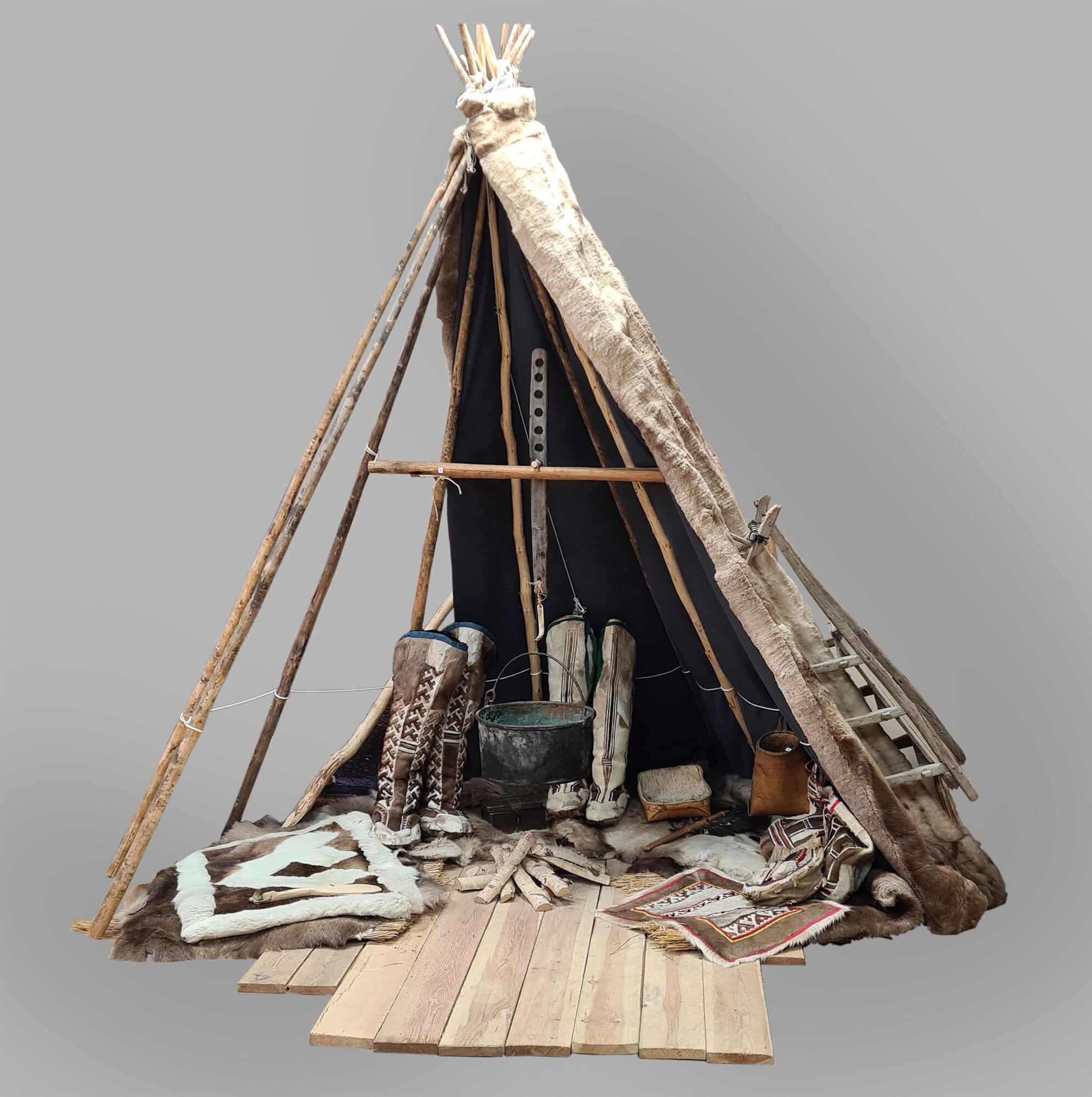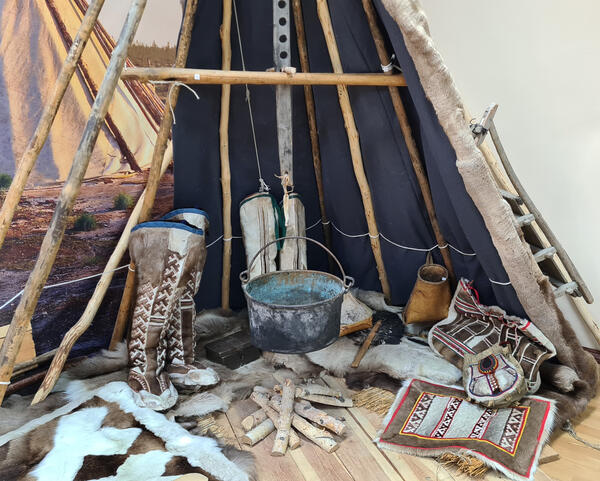A chum is a traditional dwelling of the Forest Nenets. The Nenets word “chum” means “hearth”. Only a woman could touch the hearth in the chum, collect and chop wood. She kindled the fire, talked to it, foretold future events by the crackle of firewood, smoke, strength and color of the flame. A fire was made inside the chum on the ground or in the snow. The construction of the tent was also women’s work, hence the popular saying: “An unmarried Nenets, even having a sufficient number of deer, but not a single woman in the family, cannot travel, since there is no one to put up the chum.”
The chum is simple in design and well adapted to a nomadic lifestyle. It is quickly assembled and disassembled without losing strength and warmth. It is cone-shaped so it remains stable during winds and blizzards, and the snow does not linger on it and rolls off a steep surface. There is a smoke hole at the top of the chum, and the heat from the hearth, rising up, lingers on the sloping walls and descends in a circle. In addition, the conical shape is a symbol of human power, holiness and special dignity.
The choice of a place for putting up the chum also depends on the time of year: in summer, the place should be open and well-ventilated so that mosquitoes and midges do not bite people and animals. In winter, the Nenets choose forest clearings surrounded by tall trees to protect people from cold winds. In winter, the chum is covered with nyuks — these are the hides of reindeer, tightly sewn with tendon threads. In the summer, nyuks are knocked out, cleaned, repaired, packed and stacked on sleds until the next winter. In the old days, the chum was covered with birch bark in the summer, but today this technology is almost lost and the Forest Nenets use tarpaulin.
The chum is simple in design and well adapted to a nomadic lifestyle. It is quickly assembled and disassembled without losing strength and warmth. It is cone-shaped so it remains stable during winds and blizzards, and the snow does not linger on it and rolls off a steep surface. There is a smoke hole at the top of the chum, and the heat from the hearth, rising up, lingers on the sloping walls and descends in a circle. In addition, the conical shape is a symbol of human power, holiness and special dignity.
A Nenets chum is a dwelling, but not a house in the conventional sense. The house for the northern nomads is not limited to the walls of the lodging for the night, but includes the entire inhabited territory, along which the reindeer herd is driven to a new pasture. The main occupations of the Nenets are reindeer herding, hunting and fishing. Depending on the occupation, the family chooses a place for a seasonal camp — high riverbanks or pastures with reindeer lichen.
The choice of a place for putting up the chum also depends on the time of year: in summer, the place should be open and well-ventilated so that mosquitoes and midges do not bite people and animals. In winter, the Nenets choose forest clearings surrounded by tall trees to protect people from cold winds. In winter, the chum is covered with nyuks — these are the hides of reindeer, tightly sewn with tendon threads. In the summer, nyuks are knocked out, cleaned, repaired, packed and stacked on sleds until the next winter. In the old days, the chum was covered with birch bark in the summer, but today this technology is almost lost and the Forest Nenets use tarpaulin.





